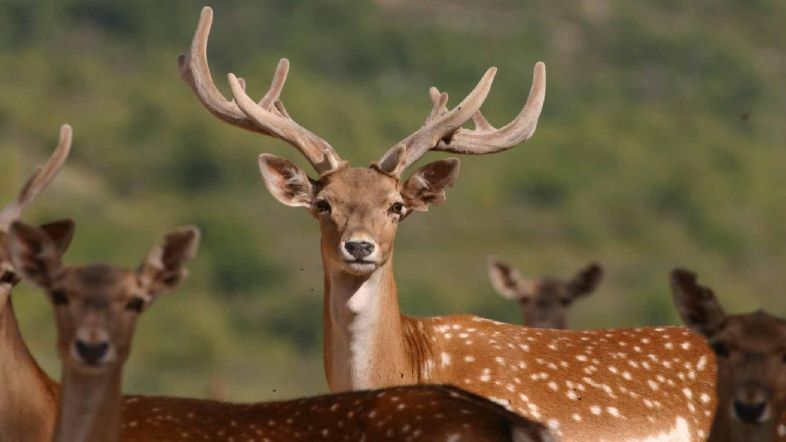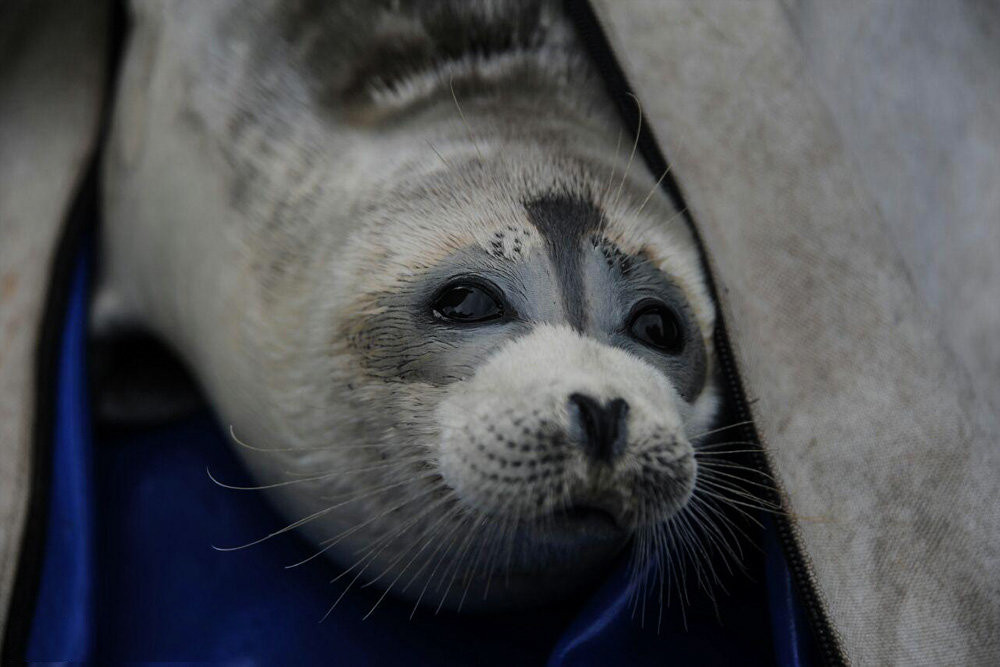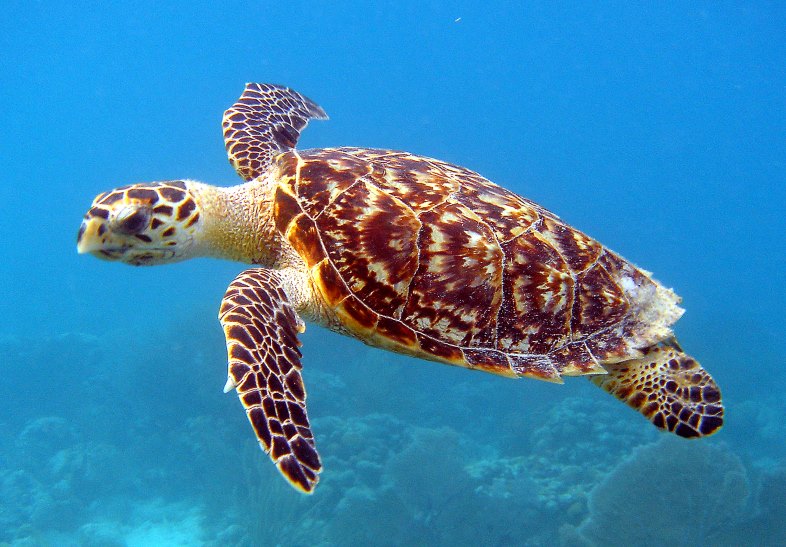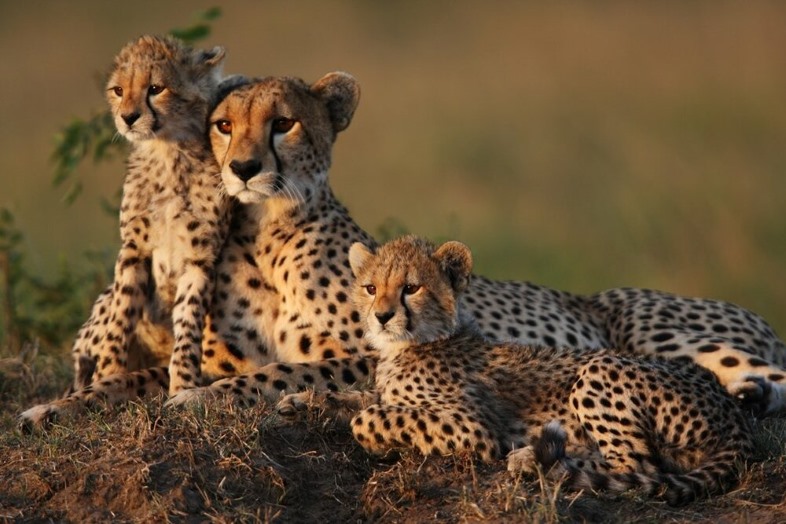Persian Fallow Deer, whose natural habitat is the dense forests of the Zagros and the forests of Khuzestan, with the scientific name of dama mesopotamica, belongs to the deer family, and belongs to the order the even-toed ungulates. This unique species has been distributed in the past from North Africa to Iraq, Turkey and Iran. However, with the destruction and reduction of natural habitat, habitat insecurity, poaching and other natural and human factors, its population has been severely decreased, in natural habitats including Iran, included in the list of endangered species. Given the deer population breeding programs, this species was in good conditions, until 2017, and we saw an increase in its population in a number of regions of Iran such as West Azerbaijan, Mazandaran, Fars, Ilam and Khuzestan. But now the situation has changed and the beautiful Persian Fallow Deer is in great danger of extinction.
The Persian yellow deer is larger than Shoka and smaller than Meral, and it differs from these two species by white spots on its back and sides. Male deer have long, broad horns that begin to grow at one year of age. At the end of winter, the first horns of deer fall and new horns begin to grow and complete by the end of summer. In summer, the back and sides of the deer are reddish-yellow, and in winter, the hair is longer and gray. The body of the Iranian yellow deer is slightly larger than that of the European yellow deer, with a head and trunk length of 150 to 200 cm, a tail of 16 to 20 cm, a height of 85 to 110 cm, and a weight of 50 to 130 kg. The Persian yellow deer is usually nocturnal and is more active in the early morning and around sunset. Their life is social, so that the population of females, children, and immature males is usually separate from that of older males. This deer is very cautious in natural environments and is very alert to danger. However, yellow deer are easily accustomed to humans and become semi-domesticated.
There has been a clear link between humans and deer for thousands of years, and the species we know today as the Iranian yellow deer plays an important role in meeting the nutritional and economic needs of post-glacial and early Holocene human societies in the Middle East and the Near East, especially in the east of Mediterranean Sea in the late Pleistocene. This species chooses some trees such as turmeric, oak and pistachio as its habitat. Based on the ancient and historical data, the Iranian yellow deer occurred from the west of the Iranian plateau to the eastern Mediterranean countries, Iraq, Lebanon and Syria. This species was first named the Iranian Yellow Deer in 1875, and by 1945 it was thought to be completely extinct, but in 1956 a small population of about 25 deer was observed in southwestern Iran.
After finding this species in Iran, a serious program was started the regeneration in captivity, and for this purpose, after its survival, it was sent to the Apple Zoo in Germany. Then, the deer was introduced to the semi-natural Dasht-e Naz Wildlife Sanctuary of Sari and then to Ashk island in Lake Urmia. In addition, intensive introduction of breeding grounds to Iraq, Palestine, Jordan, Lebanon, Turkey and Syria. Until recently, these breeding programs had helped to significantly increase the population of this animal, but recently some threats, such as the dryness of Lake Urmia, the dryness of the site vegetation and the presence of carnivores have reduced the population of Persian deer on Ashk Island, the presence of flies in Karkheh National Park, the lack of fodder and lack of care at other sites led to a sharp decline in the population of this species. According to environmental statistics in 2021, out of 230 yellow deer that were counted in 2007, only 30 remained on the Ashk Island and the species is on the verge of extinction. Therefore, the status of this species has not changed since 2010 when it was classified as endangered.
Appearance
Persian fallow deer are rare ruminant mammals from Western Asia. Their taxonomic status is disputed and some consider them as a subspecies of the Fallow deer, while others treat them as a separate species. Persian fallow deer are larger than Fallow deer, and their antlers are bigger and less palmated. Persian fallow deer resemble fawns; they have white spots covering their dark chestnut coats and males have beautiful, flattened antlers. These deer have powerful legs and are extremely fast.
Distribution
Geography
CONTINENTS : Asia
SUBCONTINENTS: Western Asia
BIOGEOGRAPHICAL REALMS: Palearctic
Persian fallow deer are nearly extinct today. They are found only in a small habitat in Khuzestan, southern Iran, two rather small protected areas in Mazandaran (northern Iran), an area of northern Israel, an island in Lake Urmia in northwestern Iran, and probably in some parts of Iraq. These deer inhabit open woodlands such as tamarisk, oak, and pistachio woodlands
Habits and Lifestyle
Persian fallow deer are social animals and live in herds. During the breeding season, males establish territories. They are active during the day and spend their time grazing, socializing in groups in open areas and resting.
Population
Population threats
The main threat to Persian fallow deer is the loss of their habitat. Since these deer are primary consumers in their ecosystem, they are negatively affected by the destruction of the habitat that supports their primary food. Another big threat to Persian fallow deer is human poaching. They were hunted for sport and for food since the early Neolithic era. The spread of firearms caused a further increase in deer poaching, dropping the population size to what was regarded as the deer’s extinction in the 1940s. Competition with domestic livestock, including cattle, has also further reduced the amount of food available to the deer as cattle are strong competitors for food and may be able to exert competitive pressure on Persian fallow deer.
Population number
According to the IUCN Red List, the total wild population size of Persian fallow deer is more than 250 mature individuals. Currently, this species is classified as Endangered (EN) on the IUCN Red List but its numbers today are increasing.









No comment